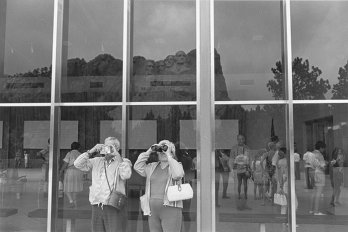In Montreal, as rain pelted downtown streets and pedestrians huddled under umbrellas, the morning of October 1, 2006, unfolded with a certain restlessness. At the finer hotels — the Ritz-Carlton, catering as it does to well-heeled, largely anglophone Canadians and American tourists; or Hôtel Le Germain, where a younger, hipper, and more decidedly French monied class rose gingerly after Saturday-night revelries — little seemed out of the ordinary. Guests passed leisurely hours sipping coffee, dining on breakfasts of fruit salad and danishes, and reading Le Devoir or the Sunday Gazette. The rain and darkening skies caused many to linger, but the chatter was animated, and plans were laid for a trip to the gym, lunch in the old city, or a visit to the Musée des beaux-arts.
Outside, along Crescent Street, with its many restaurants, and Rue Sainte- Catherine, where clothing boutiques, Starbucks outlets, and sex shops beckon passersby, hunched-over walkers moved around the detritus left over from a late Montreal night and avoided pools of gathering water. The rain was constant, heavy, the wind a further annoyance. Clad in coats, the huddled few marched with purpose, only rarely stopping to window-shop. Around noon, three McGill University students paused outside the Paramount cinemas on Sainte-Catherine to see if any of the escapist fantasies or action thrillers on offer were worth devoting an afternoon to. They soon moved on, heads bowed into the now softer rain.
In stark contrast to the lively banter at the Ritz and Le Germain, outside the mood seemed hesitant, and in the various coffee shops patrons sat mostly alone. As opposed to those of us visiting for business or pleasure, Montrealers, it struck me, were downcast, still reliving the horror of Kimveer Gill’s September 13 shooting spree at Dawson College and still furious at Globe and Mail columnist Jan Wong for linking this shocking episode to past murders at Concordia University and the École Polytechnique de Montréal. More precisely, they lashed out at the suggestion that such wanton acts of rage and murder were the result of the other feeling marginalized in a society “that valued pure laine.”
The massive edifice of Dawson College occupies a city block between Sherbrooke Street and de Maisonneuve Boulevard and, on the west and east sides, Wood and Atwater avenues. For almost eighty years, beginning in 1908, it was the Mother House of the Congrégation de Notre-Dame, a place of learning and refuge for Catholic sisters and a foundation stone for a society simpler, poorer, and less distracted by the teeming opportunities of this nowglobalized city. Its 1988 transformation into a cegep was a sign of the times and of shifting values, but its wonderful restoration respected its deep history, the facades resonant with both schooling and religion, the Catholic Church a fixture, and learning necessary to satisfy new appetites. In its current incarnation, even on this dull, bleary day and with the troubling images of the sociopathic Kimveer Gill igniting the mind’s eye, the building appears to metaphorically bridge leafy, tree-lined, wealthy Westmount with the throb and commerce of the city’s downtown core; it appears to make two solitudes one, while also hinting that the travails of the past will come back to haunt.
After nearly three decades in municipal purgatory — beginning with the October Crisis, followed by the Anglo exodus to hated Toronto (“and good riddance to you” seemed the sentiment), and through the aftermath of the failed Meech Lake Accord — Montreal launched into the twenty-first century with vitality, a booming real-estate market, and, if the culture mavens are to be believed, a new set of narratives, including Anglo-Franco crossover and creative miscegenation. Gone was the dismissive talk about allophones — the neither French nor English who, according to past premier Jacques Parizeau, had prevented Quebec from realizing its manifest destiny by saying “No” to his 1995 referendum on independence. Montreal was on the move, global, active, living in the future. And then the murder; and then Jan Wong.
Here at Dawson’s gates, and across Montreal, the mood is sombre. Inside the playgrounds of the well-to-do no sea change is apparent, the luxury of wealth being the luxury to avoid. But at street level, beneath the apparent somnolence lies restlessness and worldweary anger. Overheard conversations reveal the charge and the anxiety: “Is that what they think of us? ” Montrealers, real and impassioned, multihued and multilingual, had wind in their sails this past summer, and as university and cegep students began filling lecture halls, optimism and eclectic creativity were evident. There is a simple remedy to the nerve of insecurity hit by Kimveer Gill and exacerbated by Jan Wong: read The Story Of French, a marvellous new book that portrays a culture struggling with itself and the other, and celebrating its contributions.





